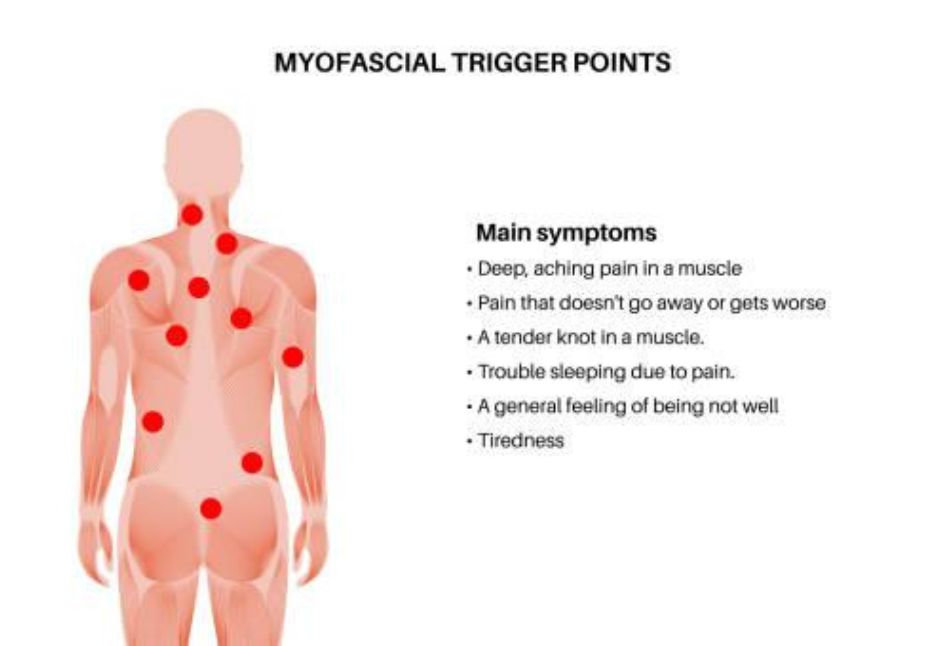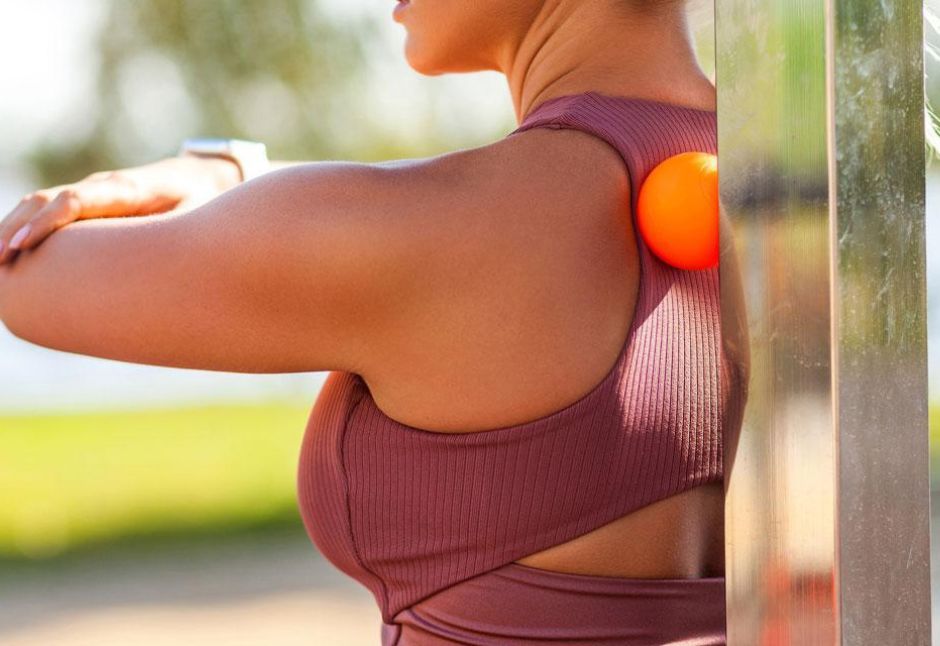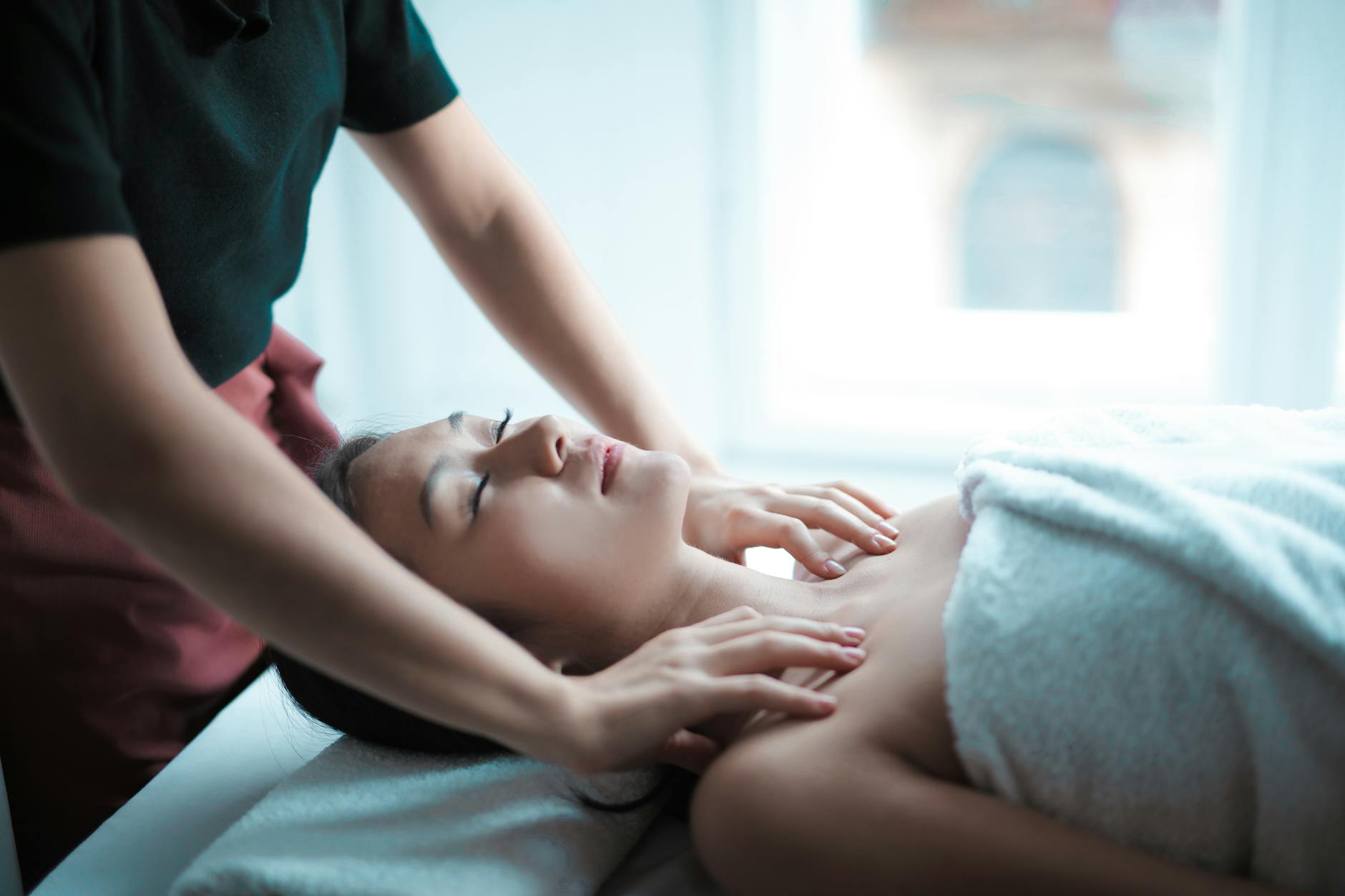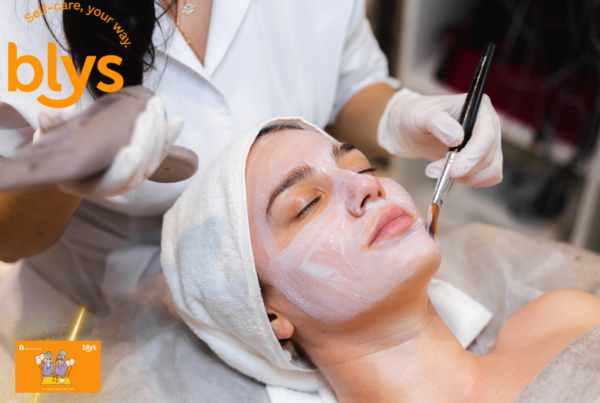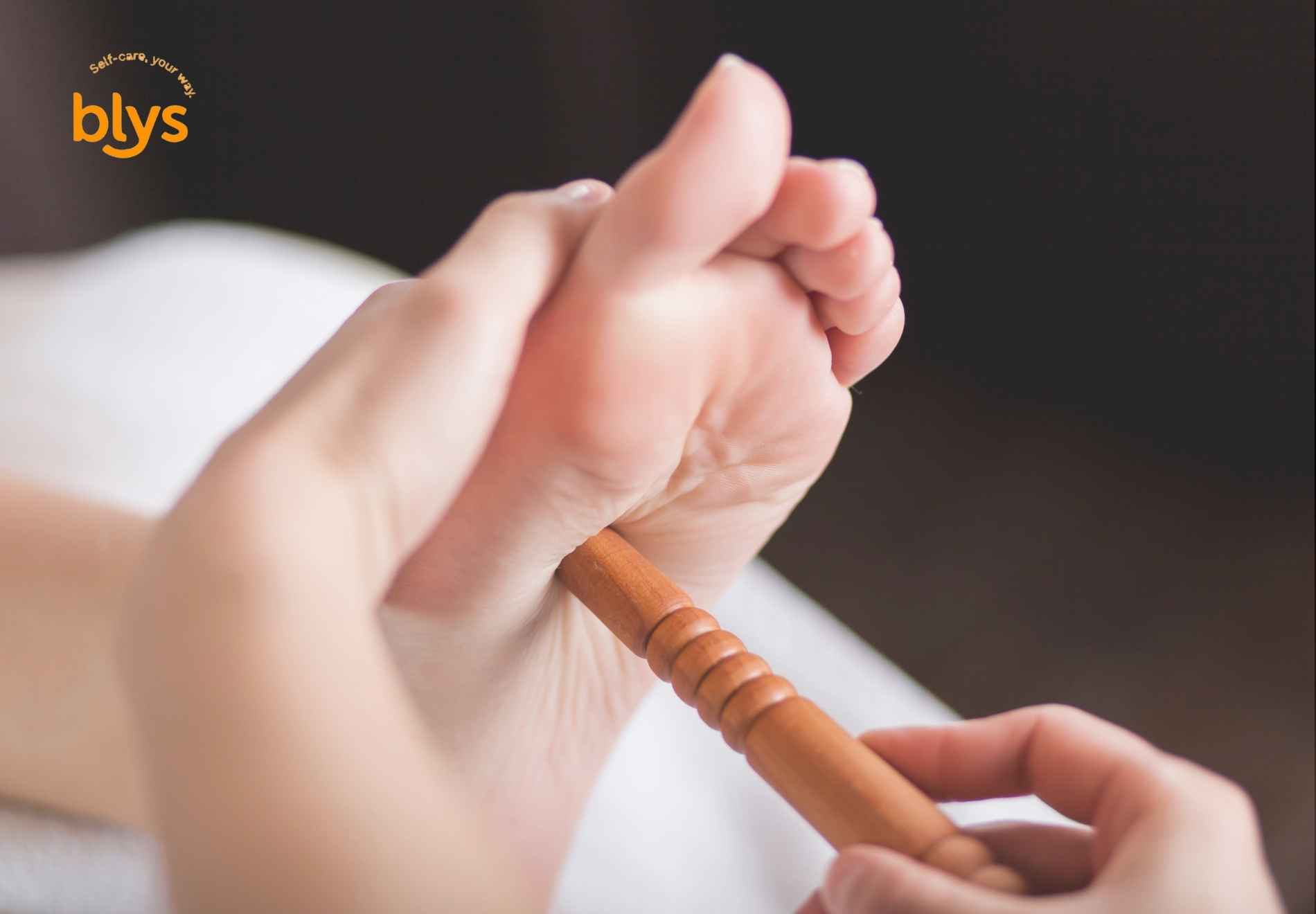
Muscle knots and muscle tension have become part and parcel of most of our daily lives. However, though these might not sound like serious issues, if left unattended they could cause considerable problems. This is where the need to use a trigger point massage tool on the right points comes into play as it can help relieve pain effectively.
Here we take a deep dive into everything you need to know about these trigger point massage tools to help you choose the right one for your needs.
What are Myofascial Trigger Points?
Myofascial trigger points are extremely sensitive spots present within a tight band of muscle. These trigger points are found in muscle tissue, fascia, or tendons and when pressed, cause pain, involuntary reactions, or sensations in parts of the body that are different than the originating region.
There are two types of myofascial trigger points:
- Active trigger points: These trigger points can either cause pain spontaneously or with movement.
- Latent trigger points: These cause muscle weakness and restrict movement, even if one does not feel pain immediately. They can be triggered through viral infections, exposure to the cold, sudden strain on the body, or emotional stress.
By gaining a basic understanding of your trigger points, you can focus on the right kind of trigger point massage tool to help relieve pain.
Common Trigger Points That Benefit from Massage Tools
Even though a trigger point is localized, the pain that is caused when it gets triggered can be felt across other parts of the body. Some of the most common trigger points that can benefit from the use of a massage tool lie in the neck, shoulders, hips, and lower back.
Benefits of Using Trigger Point Massage Tools
When used in the right manner and with the help of professionals, a trigger point massage tool can hold many benefits for you. Here is a look at some of them.
Enhanced Precision and Pressure Control
The use of trigger point massage tools helps you work through the knots and muscle tension in a precise manner. The tools concentrate on specific spots better and provide relief faster. A trigger point massage tool also helps one maintain and adjust pressure according to one’s needs without causing any harm.
Convenience and Self-Management
One of the major benefits of using a trigger point massage tool is the convenience it offers. With the right tools at your disposal, you can easily manage the pain caused by these trigger points from the comfort of your home.
Cost-Effective Alternative to Professional Therapy
It is human nature to search for cost-effective ways to go through life. The need to relieve muscle tension and knots is not an exception. The right trigger point massage tool offers exactly that. These tools act as great cost-effective alternatives to professional therapy while providing considerable relief from the pain you are dealing with.
Types of Trigger Point Massage Tools and Their Uses
The market is chockful of trigger point massage tools that can help you get relief from those muscle knots and muscle tension. Here is a look at them to help you decide which one to choose.
Manual Trigger Point Massage Tools
These types of trigger point massage tools are usually handheld manual massagers that provide a self-massage experience. They provide relief from muscle spasms, and knots and help access trigger points manually.
Foam Rollers for Myofascial Release
Foam rolling helps with self-myofascial release or SMR and is a stretching technique that provides effective relief from muscle tension and knots in a simple way. Foam rollers are easily available and require minimal investment.
Percussive Massage Devices for Deep Tissue Therapy
Percussive massage devices use repetitive and fast pressure along with vibrations that help in deep tissue therapy. The device applies direct pressure to your soft tissues while engaging your skin’s outer layer.
How to Choose the Best Trigger Point Massage Tool
Here is a look at some of the factors you need to consider when you are thinking of choosing a trigger point massage tool for yourself.
Evaluating Personal Needs and Pain Points
Since different types of trigger massage tools provide different experiences, it is important to keep your pain points and personal needs in mind. If you want to concentrate on specific trigger points then a manual trigger point massage tool might work. However, if you are looking for a deep tissue therapy experience, a percussive massage device might work better.
Key Features to Consider in a Massage Tool for Trigger Points
Some of the features to consider in a massage tool for trigger points include:
- The precision in targeting the trigger points.
- Provision to adjust pressure on the trigger points.
- How convenient they are to use on your own.
Balancing Budget and Effectiveness
You can easily find several massage therapy options in the market, but not all of them are budge-friendly or effective to a t. This is where it is important to consider both your budget and the effectiveness you expect from a trigger point massage tool. Pick one that helps you balance both these aspects.
Proper Techniques for Using Trigger Point Massage Tools
Once you have narrowed down the trigger point massage tool you want to use, knowing how to use it is extremely important. Here are a few pointers to help you make the most effective use of the tool.
How to Locate Trigger Points for Effective Treatment
Here are a few steps you can follow to locate your trigger points:
- Start by using your fingers to feel for knots or tender spots in your muscles
- Look for trigger points in the neck, shoulders, lower back, and hips.
- Be aware of where you feel pain in your body and whether pressing on a particular spot causes discomfort.
- If all else fails, consult a physician and seek professional help in spotting these trigger points.
How to Use Trigger Point Massage Tools Correctly
The right use of a trigger point massage tool will depend on the kind of tool you are using. However, the very first step to using a trigger point massage tool correctly is to identify the trigger points in your body.
Recommended Frequency and Duration for Best Results
If needed, you can use these trigger point massage tools every day, using them against the trigger points for 30 to 90 seconds. This can then be repeated three to five times a day to achieve effective relief.
Safety Precautions and Best Practices for Trigger Point Therapy Tools
While the use of a trigger point massage tool is safe, it is important to have certain precautions and practices up your sleeves to get the best out of them without harming yourself.
When to Consult a Professional Before Using Trigger Point Therapy Tools
Before you use trigger point therapy tools, it is important to consider any underlying health conditions that you might have. In such cases, it is important to consult a professional before using such tools. You can also book a trigger point massage therapy session by a professional, near you.
Avoiding Overuse and Preventing Injury with Trigger Point Massage
Though trigger point massage tools can undeniably help provide relief from muscle tension and knots, overuse of these tools can cause injury. This is why it is important to maintain a moderate frequency when using them.
When Not to Use Trigger Point Massage Tools
It is important to avoid using trigger point massage tools if you are taking blood thinners or are on cortisol treatments. If you have certain conditions like diabetes, iron deficiencies, or blood clotting issues, consult your doctor before using the trigger point massage tools.
Conclusion: Maximizing Relief with Trigger Point Massage Tools
Trigger point massage tools can indeed provide relief from pain caused by muscle tension and knots. However, to ensure you achieve the best possible relief, you need to consider certain factors. These include:
- Knowing the common trigger points to target in your body.
- The main benefits that a trigger point massage tool can provide.
- The different types of trigger point massage tools available.
- Factors to consider when choosing the right trigger point massage tool for yourself.
- The proper techniques to use these tools
- The precautions to keep in mind when using the tool.
Once you have sorted through all these factors, you will be able to maximize the relief that these trigger point massage tools can provide effectively.
Frequently Asked Questions (FAQs)
Can trigger point massage tools replace professional massage therapy?
Trigger point massage tools act as a great cost-effective alternative to professional massage therapy.
How often should I use a trigger point massage tool?
A trigger point massage tool can be used daily, for 30-90 seconds on each trigger point and it can be repeated 3 to 5 times. However, it is important to not overuse them as they can lead to injuries if not used with restraint.
Are there any side effects of using a trigger point therapy tool?
The use of trigger point therapy is not ideal for people who have underlying health conditions like diabetes, kidney diseases, or blood clotting issues. Even people who have had recent surgery or suffer from acute injuries are advised against using these tools. It is better to consult your doctor in such cases.
What should I do if my pain increases after using a trigger point massage tool?
It is better to consult a professional or your doctor if the pain increases after using a trigger point massage tool.
Can I use trigger point tools on any part of my body?
Trigger point massage tools are designed to be used on the various trigger points that are present in the body. These can commonly be found in the neck, shoulders, lower back, or hips.
References:
- https://health.clevelandclinic.org/trigger-point-massage
- https://pubmed.ncbi.nlm.nih.gov/18054148/#:~:text=A%20myofascial%20trigger%20point%20is%20a%20hyperirritable,referred%20pain%2C%20motor%20dysfunction%2C%20and%20autonomic%20phenomena.
- https://www.mayoclinic.org/diseases-conditions/myofascial-pain-syndrome/symptoms-causes/syc-20375444#:~:text=Myofascial%20pain%20syndrome%20is%20a,This%20is%20called%20referred%20pain.

